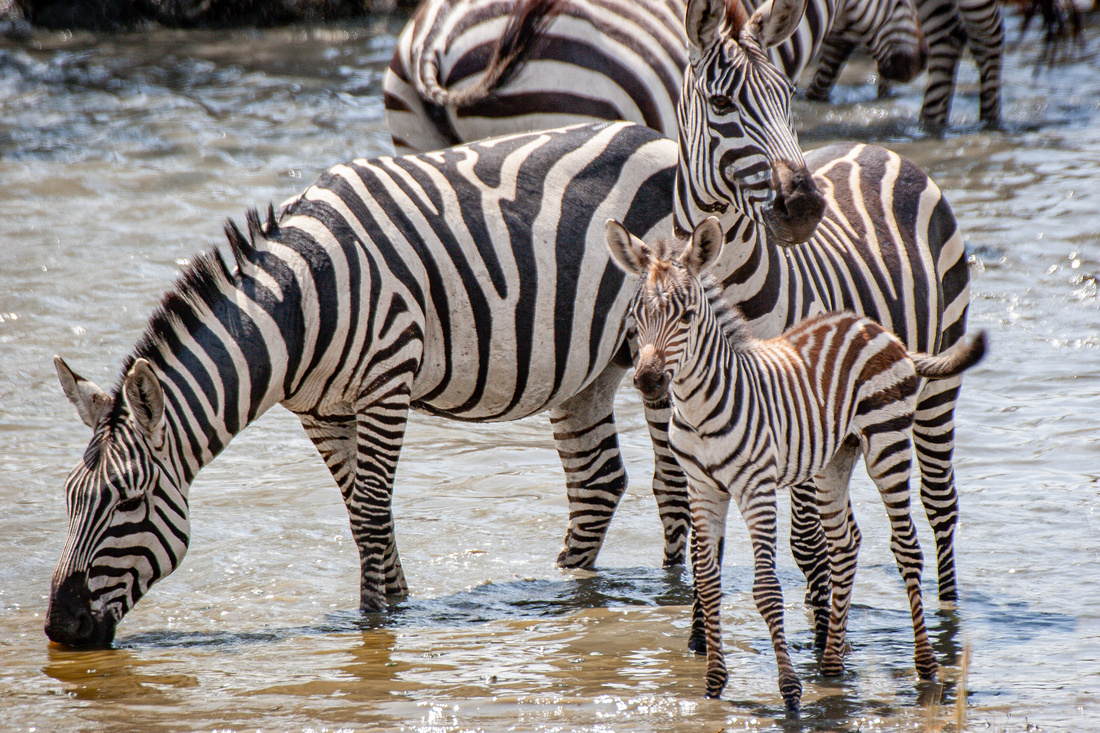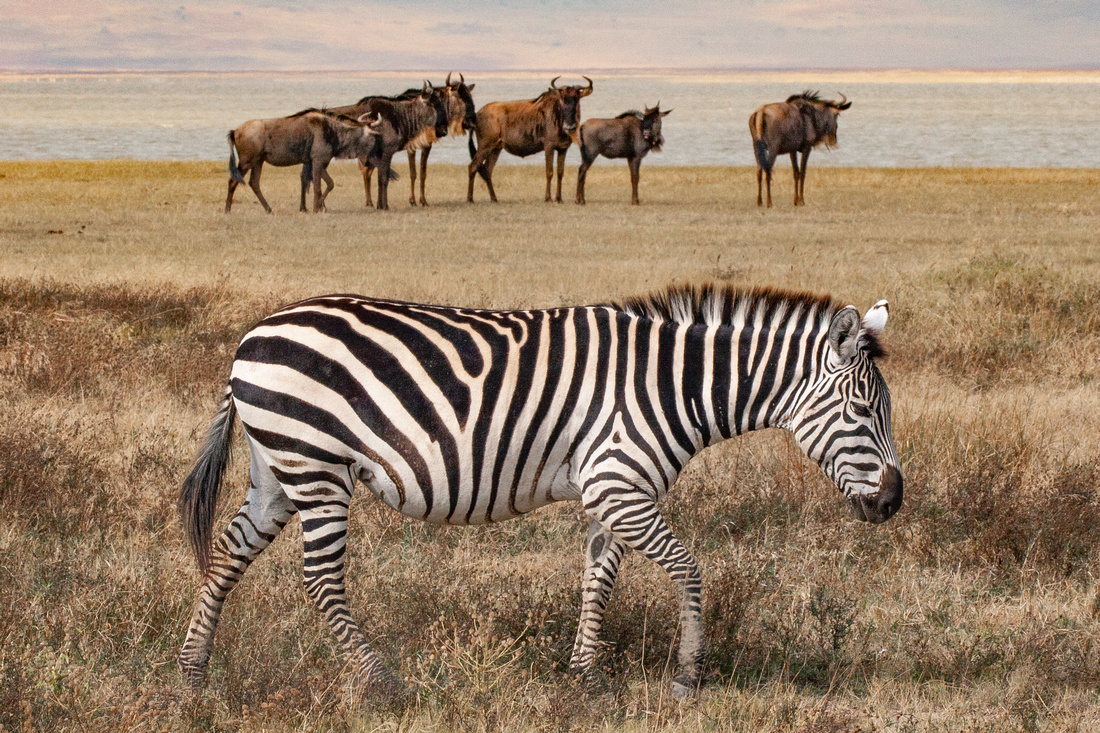Species Highlight: Zebras
Species Highlight: Zebras
Text and photos by Heather Cline
The zebra is a member of the ungulate (horse and donkey) family but with distinctive black and white stripes. This animal is located in Eastern and Southern Africa. This post covers details about zebras that make them unique and valuable to their ecosystem.
Size
Zebras vary in size depending on the species, with Grevey's being the largest, then mountain, followed by the smallest and most populus, the Palins Zebra. Ranging from 3.5 to 4 feet tall at the shoulder and 7-10 feet in length.


Lifespan
Roughly 25 years


Anatomy & Physical Characteristics
There are three species, all distinguished by their stripe patterns, the Grevey's, Plains, and Mountain zebra. All zebra's stripes are different, like a fingerprint. In fact, scientists use their stripes to easily identify individuals.
There are multiple theories about their stripes. One is that they are used for individuals to identify each other. Another is that they are used to camouflage against predators when the herd is running together, and finally that the stripes confuse the vision of disease carrying flies that have difficulty landing on their striped skin.
Zebras can sleep while standing up by locking the joints in their knees, similar to their horse relatives.
Zebras have acute senses of smell and taste, and their night vision is thought to be as good as a cat or owl's.


Speed & Agility
Zebras are built for speed and long-distance migrations. They can reach speeds of 36 mph. If a zebra can escape a predator within the first 100 yards of an attack, they are usually safe. Zebras are also excellent swimmers.


Diet
Zebras are herbivores, eating mostly grasses. They have strong front teeth to pull up the grass and large molars for grinding. One of the primary reasons zebras migrate is to locate food and water. During the dry season, grasses dry up and food becomes scarce so they must move to new locations to find better grazing and water sources.
Zebras play an important role in their habitats, helping to maintain the balance of vegetation by grazing and clearing the tops of coarse grasses that are difficult for other herbivores to digest.


Social and Breeding Behaviors
Zebras living in small family groups with differentiations between the three species. In all species, there is a stallion and multiple mares, and these small groups may join large herds and even comingle with other species like wildebeests and giraffes. Male zebras leave the family herd between 1-3 years of age to join bachelor herds until they are old enough to compete for females.
Newborn foals can stand on their own just 6 minutes after being born. They can walk after 20 minutes and run after 40 minutes.
When attacked by a predator, such as a hyena, the herd will encircle the mother and young and the stallion will fight back making hyena attacks often unsuccessful.


Communication
Zebras are highly social animals and use a variety of methods to communicate with each other:
- Vocalizations: braying, barking, snorting, and two-syllable cries. These sounds communicate contentment to warning of predators.
- Facial expressions: stretching their faces forward and putting their ears forward when greeting each other or showing their teeth when they feel threatened.
- Ear positioning: their ears stand erect when they are calm and friendly, strained forward when they are afraid, and flattened back when they are angry.
- Body posture: zebras often stand head to tail with each other, resting their heads on each other's backs. This allows them to look out for danger and keep flies away from each other's faces.


Range and habitat
The range and habitat vary slightly between the three species.
- Grevey's: Eastern Africa including arid and semiarid grasslands and shrublands.
- Plains: Eastern and southern Africa; savannahs, grasslands and open woodlands
- Mountain: Southwestern Africa; mountains, rocky uplands and shrublands


Predators and Threats
Their non-human predators include lions, cheetahs, leopards, spotted hyenas, brown hyenas and Nile crocodiles.
All three species of zebras have declined in population due to human activity, including loss of habitat, illegal poaching, disease, and civil wars. The Grevy’s is listed as endangered, the mountain as vulnerable, and the plains listed as near threatened.


Zebras are one of the most striking animals in the natural world, primarily due to their unique pattern of stripes. This provides them benefits to survive in a harsh environment and also makes them a wonderful wildlife photography subject!